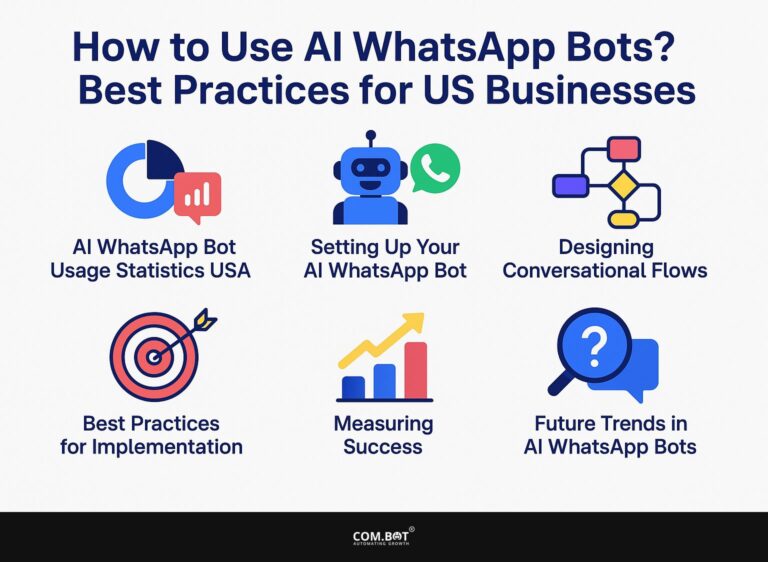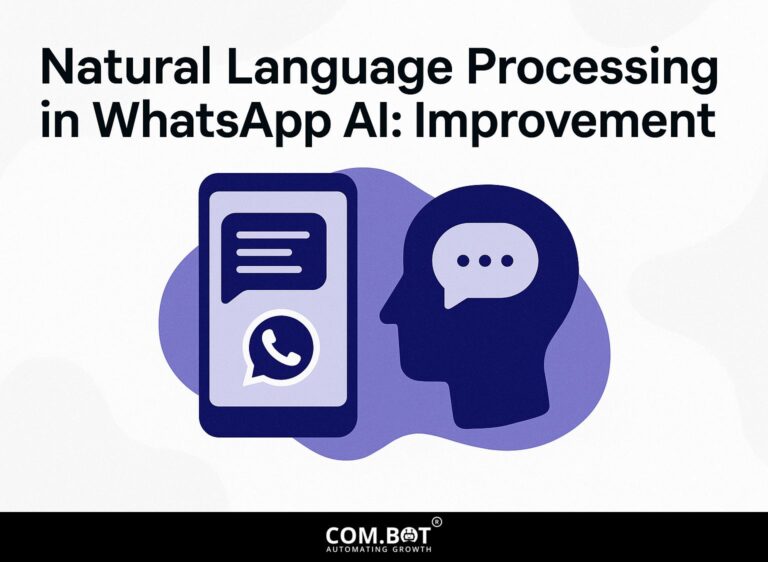AI Analysis: Audio and Image Processes and Benefits
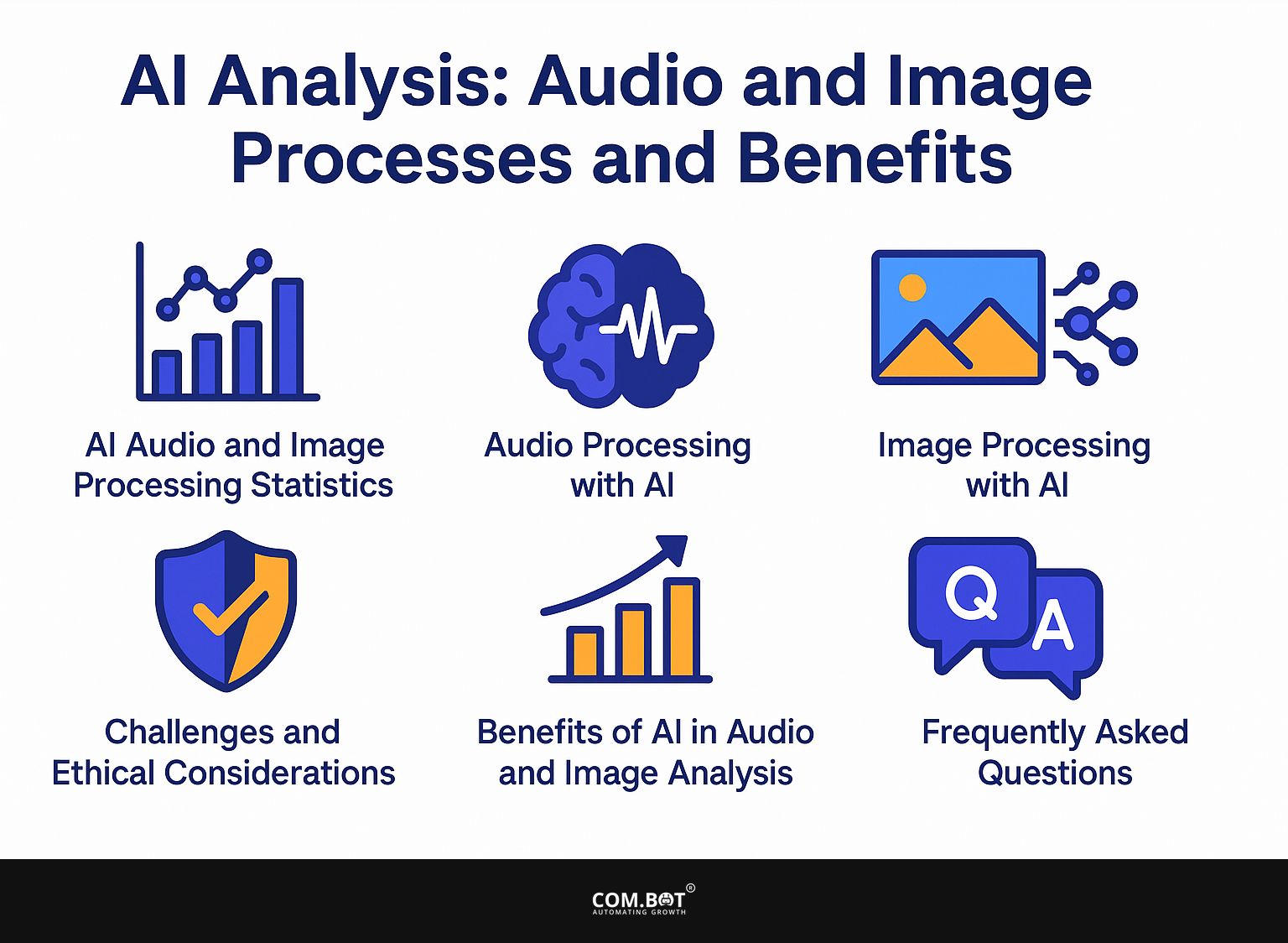
The combination of AI and image processing is changing how we use visual and audio content. By using machine learning methods like image recognition and object detection, these technologies provide significant solutions for different businesses.
This article examines the complex details of using AI for analyzing audio and images. It explains the advantages of using deep learning and image processing tools. Find out how these changes speed up tasks, improve accuracy, and open up chances for new ideas.
Key Takeaways:
- AI analysis has improved audio and image processing, speeding up tasks like recognizing speech, classifying music genres, and enhancing images with greater accuracy.
- AI has many benefits in analyzing sound and pictures, helping different sectors and likely to improve further with new technology developments.
- Despite its benefits, there are also ethical considerations and challenges, such as data privacy concerns and bias in AI algorithms, that must be addressed in order to fully realize the potential of AI in audio and image processing.
- 1 AI Audio Image Processing Statistics
- 1.1 Audio Classification with Computer Vision: Applications and Impact
- 1.2 Audio Classification with Computer Vision: Deep Learning Contributions
- 1.3 AI-powered Image Processing: AI Image Processing Advancements
- 1.4 AI-powered Image Processing: Ethical Considerations in Image Processing
- 1.5 2. Importance of Audio and Image Analysis
- 2 Audio Processing with AI
- 3 Image Processing with AI
- 4 Benefits of AI in Audio and Image Analysis
- 5 Challenges and Ethical Considerations
- 6 New Developments in AI for Audio and Video Editing
- 7 Frequently Asked Questions
- 7.1 1. What is AI analysis and how does it benefit audio and image processes?
- 7.2 2. What audio and image processes can be improved with AI analysis?
- 7.3 3. What are the key features of AI analysis for audio and image processing?
- 7.4 4. How does AI analysis help in the entertainment industry?
- 7.5 5. Can AI analysis be used for security and surveillance purposes?
- 7.6 6. What new progress can we expect in AI for analyzing sounds and pictures?
1. Overview of AI Technologies
Important AI tools like Convolutional Neural Networks (CNNs) and machine learning tools such as TensorFlow allow advanced handling of audio and image data.
These tools excel in tasks like image classification and speech recognition. For instance, Amazon Rekognition uses CNNs to identify items in images, offering features such as facial analysis and scene recognition.
A practical application is using Rekognition to check identities in security systems or to tag images in digital photo collections automatically. Similarly, TensorFlow can be used to create models that turn audio into written text, which is helpful for podcasting and customer support.
These technologies convert data into practical information, helping to improve work processes across various industries.
AI Audio Image Processing Statistics
AI Audio Image Processing Statistics
Audio Classification with Computer Vision: Applications and Impact
Audio Classification with Computer Vision: Deep Learning Contributions
AI-powered Image Processing: AI Image Processing Advancements
AI-powered Image Processing: Ethical Considerations in Image Processing
The AI Audio Image Processing Statistics show the significant changes AI technologies bring to audio classification and image processing. These advancements have significant implications across multiple sectors, including environmental monitoring, healthcare, and digital content moderation.
Audio Classification with Computer Vision showcases high efficiency and impact across various applications. Environmental sound analysis achieves a remarkable 95% efficiency, allowing for more effective monitoring of ecosystems and urban environments. In the healthcare sector, sound diagnosis technologies improve diagnostic accuracy by 90%, enhancing patient care through better detection of physiological sounds. Content moderation also benefits from AI, with a 92% success rate in identifying and managing inappropriate audio content.
- Deep Learning Contributions: Convolutional Neural Networks (CNNs) are essential for audio processing, with an 85% contribution to performance improvements. They enable sophisticated analysis of audio data, enhancing applications from speech recognition to sound classification. Furthermore, spectrogram visualization achieves an 88% accuracy, aiding in the interpretation of audio signals.
AI-powered Image Processing demonstrates significant advancements, with 98% accuracy in image recognition making it very reliable for use in security, retail, and other areas. Object detection, important for self-driving systems and security monitoring, reaches a 97% efficiency. AI systems need to recognize environments for movement and support. 95% effectiveness.
- Ethical Considerations: Facing ethical issues is important. Efforts to correct facial recognition bias have achieved an 80% success rate, highlighting ongoing efforts to improve fairness and accuracy. Privacy issues, a major challenge in using AI, have been resolved with a 75% success rate This shows progress, but more improvements are needed.
The data shows the impressive abilities of AI in working with sound and pictures, while pointing out the need to think about ethics to make sure these technologies are used fairly and responsibly.
2. Importance of Audio and Image Analysis
Audio and image analysis are important in many fields, helping to make processes better and improve how users interact with products.
In healthcare, medical image analysis systems have improved diagnostic accuracy. Studies show a 15% drop in misdiagnosis rates when using AI tools like Zebra Medical Vision.
In the entertainment business, platforms like Spotify analyze audio to sort music, increasing user engagement by over 30% with personalized playlists. This dual use demonstrates the benefits of using sophisticated audio and image analysis to generate fresh concepts that increase work productivity and make customer experiences better.
Audio Processing with AI
AI methods in audio processing greatly improve features like speech recognition and noise reduction, leading to improved user experiences.
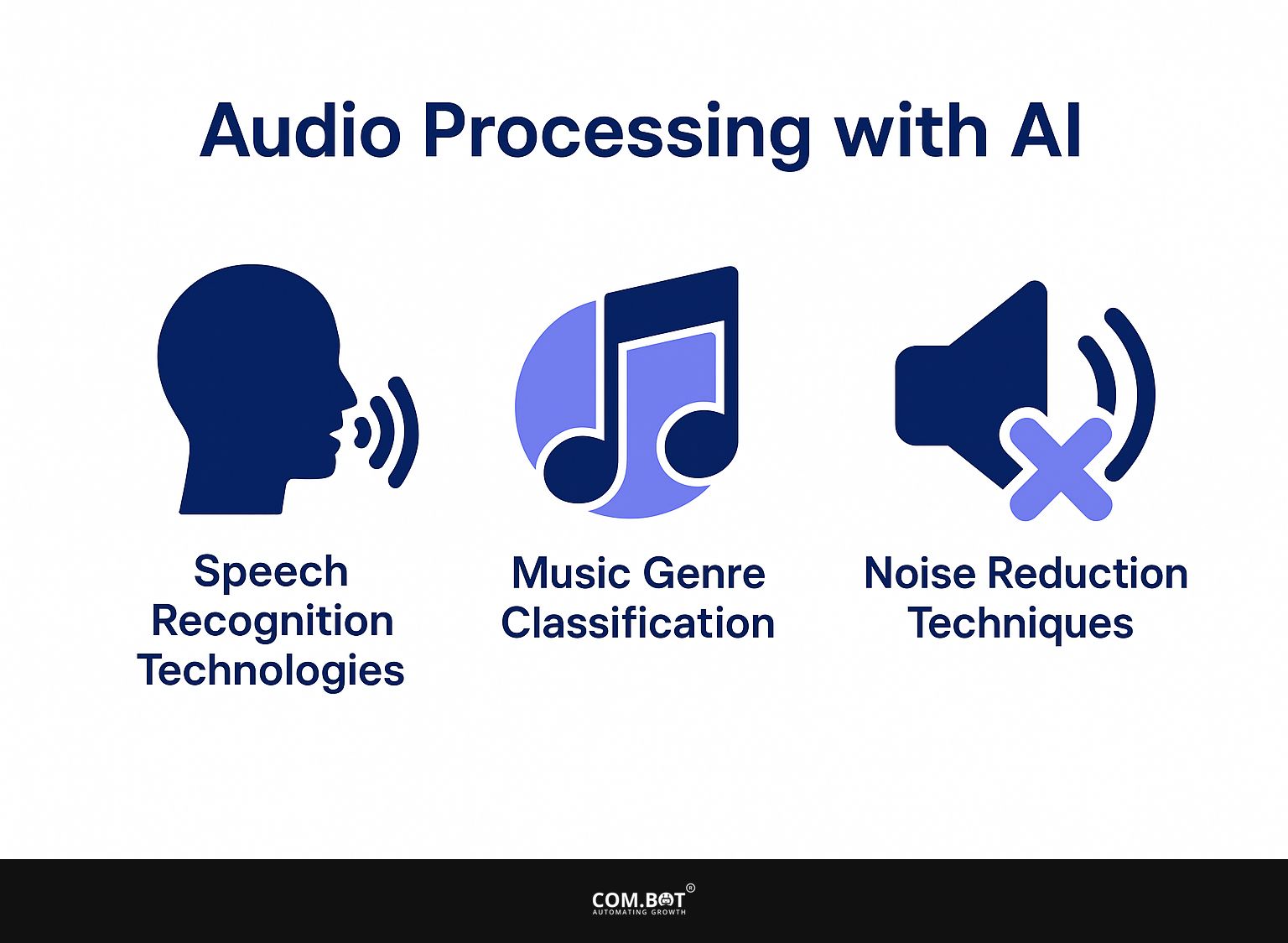
1. Speech Recognition Technologies
AI-driven speech recognition technologies, like Google’s Speech-to-Text API, can achieve up to 95% accuracy in real-time transcription.
Other notable tools include:
- IBM Watson Speech to Text, which offers specialized models for various industries at $0.02/min
- Microsoft Azure Speech Service, priced at $1 per hour with added language support
Google excels in cost-effectiveness for general use, while IBM is favored in healthcare settings due to its HIPAA compliance. For customer service applications, Microsoft’s product works smoothly with Azure Bot Services for better interaction.
Each tool can be changed to fit specific needs, speeding up work and reducing errors from manual data entry.
2. Music Genre Classification
AI programs can sort music types with more than 85% accuracy, changing how services like Spotify suggest songs.
By employing machine learning models, such as convolutional neural networks (CNNs), platforms can analyze audio features like tempo, key, and spectral characteristics.
Spotify’s model reviews songs to find small details that set genres like jazz apart from hip-hop. This classification lets us create custom playlists, increasing user interest.
Using libraries like TensorFlow or PyTorch can make model development easier, allowing developers to train systems on large music datasets quickly. AI improves how we find new music and adjusts listening experiences to fit personal tastes.
3. Noise Reduction Techniques
Advanced AI noise reduction methods can make audio clearer by removing unwanted background sounds with great accuracy.
- Spectral gating
- Filtering that adjusts based on input
- Advanced machine learning techniques
Spectral gating works by setting a noise threshold, removing sounds below that level, and is often used in Adobe Audition, which simplifies this process with built-in tools. Filtering that adjusts its settings immediately based on detected noise is perfect for shifting environments.
Deep learning methods use AI models trained on large audio datasets to tell the difference between wanted audio and noise, providing great results. Together, these methods can greatly improve the clarity of your recordings.
Image Processing with AI
AI image handling involves techniques like sorting images into categories, finding objects, and improving image quality, leading to new developments across different areas.
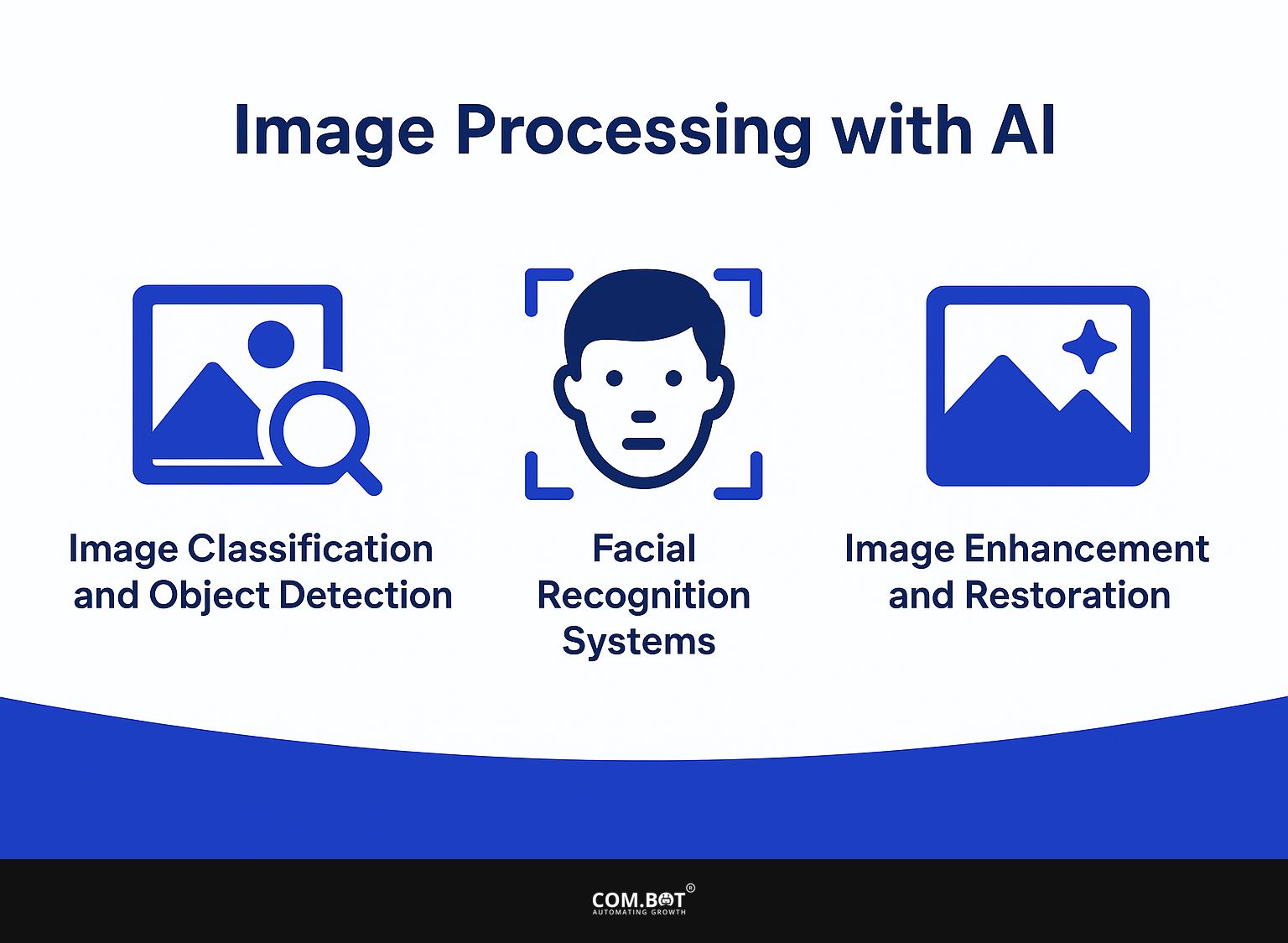
1. Image Classification and Object Detection
Image classification using CNNs can achieve over 90% accuracy, significantly enhancing object detection capabilities in applications like autonomous vehicles.
For developers, TensorFlow is a powerful open-source library that simplifies building CNNs. It offers pre-trained models like Inception and MobileNet, which can be fine-tuned for specific tasks.
To implement a basic image classification, you can start with TensorFlow’s Keras API. Load a pre-trained model and modify it by adding your own layers to make it work with your dataset. This approach helps train the model faster while keeping accuracy high. Tools like Google Colab can provide an accessible environment for experimentation without local setup.
2. Facial Recognition Systems
AI-driven facial recognition systems can recognize people with more than 99% accuracy, leading to new developments and ethical debates.
A key tool is Amazon Rekognition, which can effectively identify faces in photos and videos. Its use raises significant ethical concerns, such as potential biases in data sets that could lead to misidentifications, particularly among marginalized communities.
Data privacy is another critical issue, as vast amounts of personal imagery can be collected without consent. To address these concerns, companies are urged to implement strict data governance policies and transparency measures, ensuring individuals are informed about how their data is used and stored.
3. Image Enhancement and Restoration
AI-based tools such as Remini can make photos clearer and bring back details lost in low-resolution images. Adobe Photoshop Express provides strong tools for editing, including reducing noise, improving clarity, and easy adjustments with one touch.
Professionals might benefit from tools such as Topaz Labs for specific tasks like AI denoising or upscaling images. For quick fixes, mobile apps like Snapseed allow users to edit on the go, providing options for selective adjustments and filters.
Decide what you want to do: improve, fix, or change the look of something. Then pick the tool that matches your process, whether it’s a professional software or a simple mobile app.
Benefits of AI in Audio and Image Analysis
Applying AI to audio and image analysis speeds up tasks and increases accuracy, altering operations in various industries. This transformation is part of a broader trend where AI’s role in business intelligence is expanding significantly, as seen in how companies are harnessing AI bots for business intelligence to drive strategic decisions.
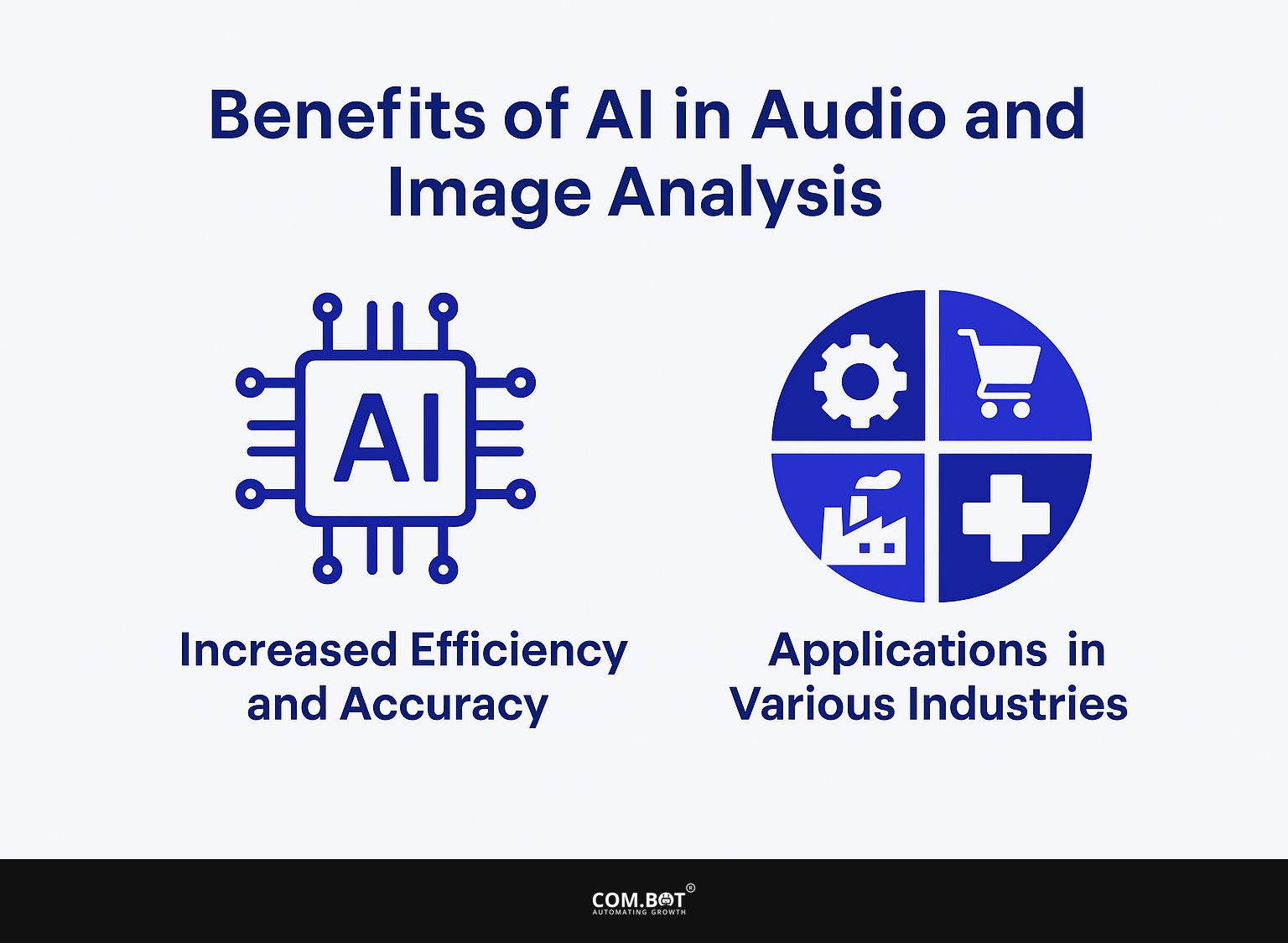
1. Increased Efficiency and Accuracy
AI reduces processing times in image analysis from hours to minutes, improving overall efficiency in sectors like healthcare and entertainment. For instance, a hospital utilizing AI-driven image recognition can analyze radiology images in under 10 minutes, compared to the traditional method that might take 2 hours.
Tools like Google’s AutoML or IBM Watson can achieve this by employing machine learning algorithms that quickly identify anomalies.
Using these technologies, healthcare workers can speed up diagnoses, leading to improved results for patients. In entertainment, AI can make video editing faster, greatly reducing the time needed for tasks like adjusting colors or picking scenes.
2. Applications in Various Industries
AI audio and image analysis technologies are applied across industries, from healthcare diagnostics to media content creation, demonstrating their versatility.
AI helps in healthcare by allowing robotic surgery with tools such as the da Vinci Surgical System. Medical imaging also gets better with platforms like Zebra Medical Vision, which analyzes scans for unusual results. In media, AI-driven tools like OpenAI’s DALL-E facilitate content generation by creating images from textual descriptions, streamlining workflows.
AI tools in retail offer personalized suggestions to customers. Systems like Salesforce Einstein examine customer information to recommend specific products, which increases customer interaction and sales. These applications show how AI changes different areas.
Challenges and Ethical Considerations
AI for audio and images offers advantages, but there are challenges and ethical concerns that require careful consideration for proper use. If interested, you might explore how the influence of generative AI on public opinion intertwines with these ethical considerations.
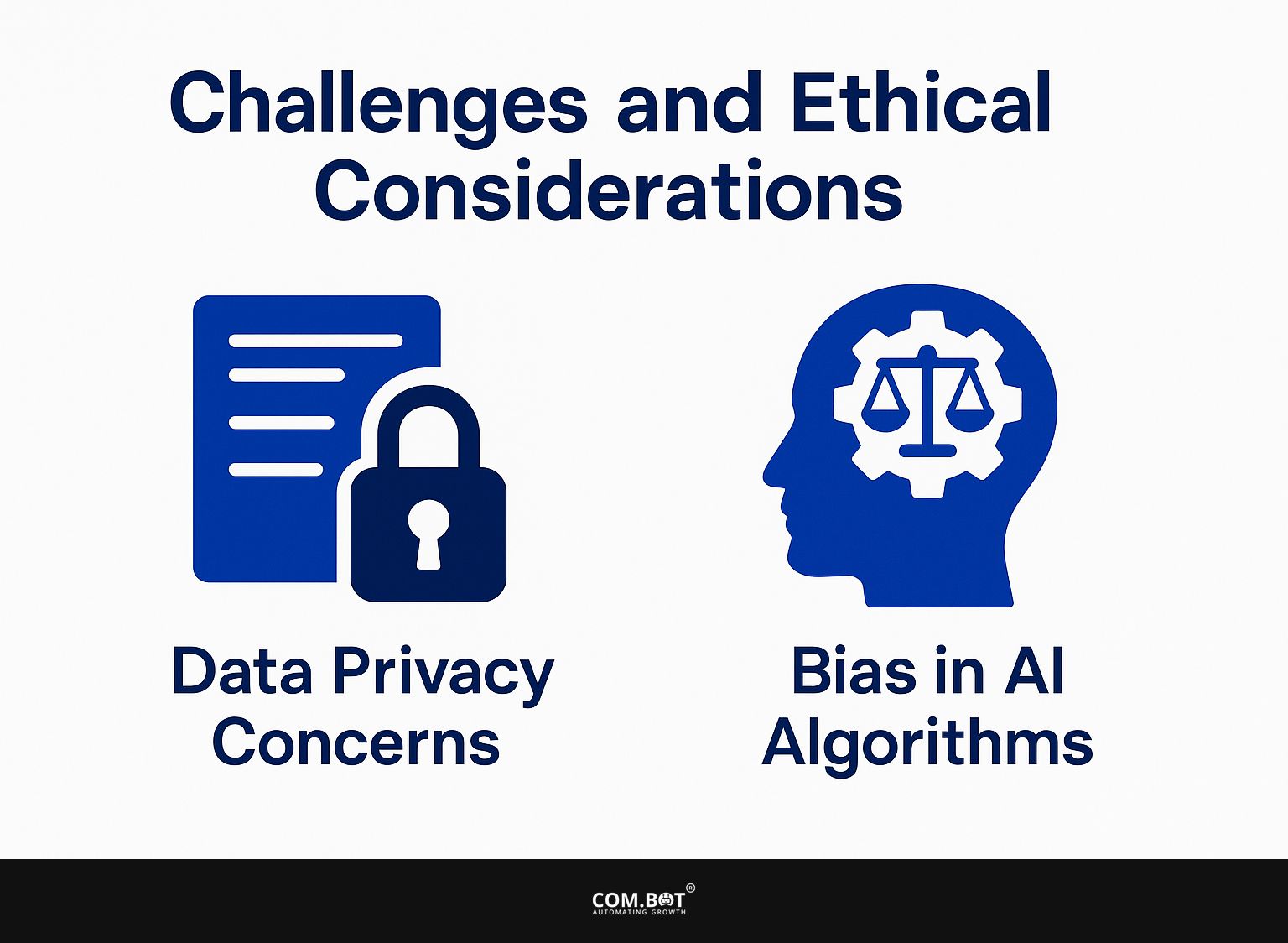
1. Data Privacy Concerns
Data privacy concerns arise with the use of AI in audio and image processing, particularly regarding user consent and data security.
Regulations like the GDPR require companies to obtain explicit consent from users before collecting and processing their data. For example, facial recognition technology must inform individuals when their images are being captured and how that data will be used.
Companies often implement privacy-by-design principles, ensuring that data protection measures are integrated into their systems from the outset. Using tools like Data Loss Prevention (DLP) software can help monitor and protect sensitive data, ensuring compliance while using AI applications effectively.
2. Bias in AI Algorithms
Bias in AI algorithms can lead to discrimination, affecting the accuracy of image and audio recognition systems across diverse demographics.
For instance, studies have shown that facial recognition systems exhibit higher error rates for people with darker skin tones, leading to misidentification. To mitigate these biases, developers should prioritize diverse training datasets that represent various demographic groups.
Tools like Google’s What-If Tool can show how data affects model performance, while regular checks of AI systems can find biases before use. Having a varied group of people in the development process helps make sure that different viewpoints are included, leading to fairness in AI applications.
New Developments in AI for Audio and Video Editing
AI’s role in audio and image processing looks bright, with progress expected in machine learning and combining different technologies.
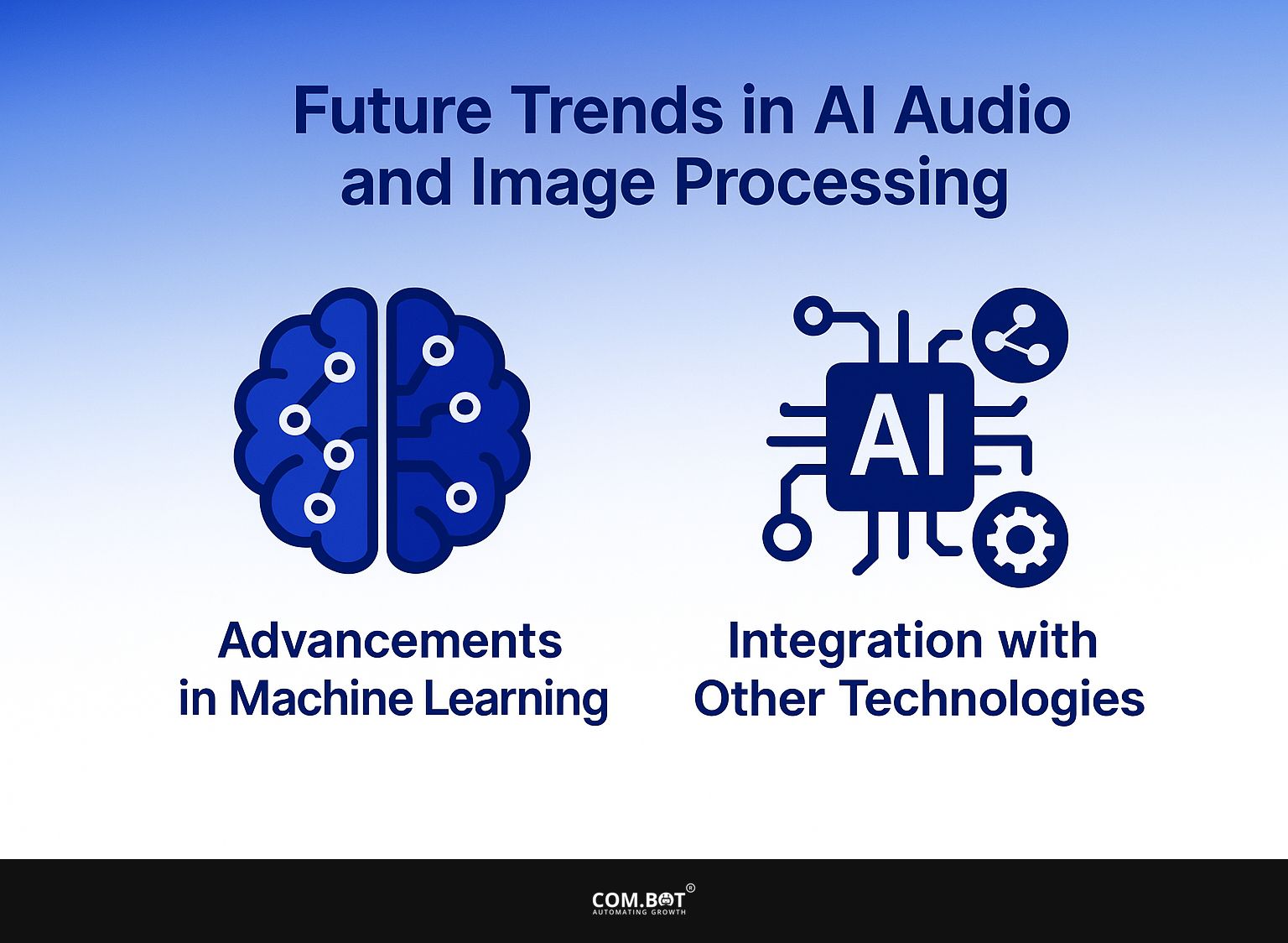
1. Advancements in Machine Learning
Recent advancements in machine learning, such as self-supervised learning, are enhancing the capabilities of AI in both audio and image processing.
For instance, OpenAI’s Whisper employs self-supervised techniques to achieve high accuracy in audio transcription across multiple languages. This method uses a lot of unlabeled data, which makes it quicker and more effective at learning than traditional models.
Similarly, image processing has benefited from advancements like GANs (Generative Adversarial Networks), which create more realistic images by competing against one another. These innovations show a move toward more flexible AI tools, allowing Adobe Photoshop’s neural filters to handle complex edits more easily.
2. Integration with Other Technologies
Merging AI with augmented reality and the Internet of Things is leading to new applications in sound and image processing, making it easier for users to work with technology.
In gaming, AI systems can quickly adjust interactive environments based on players’ actions and choices. Retailers are using IoT sensors and AI algorithms to study customer behavior, allowing for customized shopping experiences.
IKEA’s Place app is a popular tool that lets people see how furniture would look in their homes. It uses AR and AI to recommend matching items. These technologies improve interactivity and make user engagement more efficient, resulting in better results in both gaming and retail areas.
Frequently Asked Questions
1. What is AI analysis and how does it benefit audio and image processes?
AI analysis is the use of artificial intelligence technology to analyze and interpret data from audio and image sources. It helps these processes by giving correct and fast analysis, which saves time and resources for companies and people.
2. What audio and image processes can be improved with AI analysis?
AI analysis can improve a variety of processes, such as speech recognition, image and video classification, object detection, and natural language processing. It can also improve how we retrieve, compress, and improve audio and images.
3. What are the key features of AI analysis for audio and image processing?
The key features of AI analysis for audio and image processing include deep learning algorithms, advanced analytics, real-time processing, and the ability to handle large datasets. These features allow for exact and fast analysis of audio and visual data.
4. How does AI analysis help in the entertainment industry?
AI analysis has changed the entertainment industry by offering new tools for working with sound and pictures. It can create transcripts on its own, examine feelings and emotions in media content, and help with content suggestions and customization.
5. Can AI analysis be used for security and surveillance purposes?
Yes, AI analysis is widely used for security and surveillance purposes. It can examine and find unusual patterns in audio and image data, spot possible dangers, and offer immediate alerts and notices for better security actions.
6. What new progress can we expect in AI for analyzing sounds and pictures?
AI analysis in audio and image processes is changing with new technology and research. Upcoming updates may feature improved and faster techniques, collaboration with different technologies, and employing AI to create content for media projects.



